A sideboard (also called a buffet) gives your dining room essential storage plus a surface for serving and display.
Size impacts everything about your space. The right dimensions create visual harmony and keep traffic flowing smoothly.
A sideboard that's too large overwhelms your room and blocks movement. One that's too small gets lost and throws off the room's balance.
You'll need to measure your space, match proportions to your dining table, figure out storage needs, and coordinate with your style.
Measure Your Dining Room Space
Start by identifying the wall where your sideboard will live. Measure both the width and height of that entire space.
Planning for negative space matters just as much as the furniture itself. This empty space keeps your dining room functional and prevents that cramped feeling nobody wants.
Try this visualization trick: Put painter's tape on your floor to mark where a sideboard would sit. You'll see its actual footprint and discover whether people can still move around comfortably.
Key Clearance Rules
Your sideboard needs breathing room to work properly:
- Walkways: Leave 24-36 inches between the sideboard and your dining table. This clearance lets you walk through without turning sideways or bumping furniture.
- Chair Space: People need room to pull out dining chairs and sit down. Make sure chairs clear the sideboard even when fully extended.
- Doors & Drawers: Account for the sideboard's function. Doors and drawers need 18-24 inches of clear space in front to open completely.
Check for Obstructions
Survey your chosen wall for potential problems. Your sideboard shouldn't block:
- Doorways
- Windows or windowsills
- Power outlets you need
- Heating or cooling vents
Entryway & Hallways
Measure every doorway, hallway, and corner between your entrance and the dining room. That perfect sideboard becomes useless if it can't make it through your front door.
Key Placement Considerations
- Ideal Wall: The longest clear wall usually works best for sideboard placement. This position anchors your space while maintaining natural traffic flow.
- Rug Placement: Your area rug should define the dining table zone. Place the sideboard off the rug, directly on the floor, to avoid that overcrowded look.
- Open-Plan Spaces: Open-concept homes offer unique opportunities. A sideboard can serve double duty as a subtle room divider, separating dining and living areas while preserving sight lines.

Consider Sideboard Width and Length
Your sideboard's length shapes the entire room's flow. Match it to your space for the right balance.
Small rooms call for shorter pieces around 4-5 feet. These proportions keep the space open and functional. Larger rooms can handle sideboards over 6 feet, creating a substantial presence without overwhelming the area.
Leave breathing room on both sides, at least 6 inches. This space prevents the sideboard from looking crammed against the walls and maintains visual balance.
Typical Lengths
Most sideboards range from 40 to 72 inches:
- Large Rooms: Support longer pieces from 80 to 100 inches comfortably
- Small Rooms: Work best with compact 40-48 inch pieces
- Average Rooms: Handle standard 60-72 inch sideboards well
Sideboard Depth
Depth determines your walking space:
- Standard Depth: Ranges from 16-24 inches for full storage capacity
- Shallow Depth: Choose 15-18 inches for narrow rooms or tight walkways
Shallow models give you storage without sacrificing movement. They're perfect for maintaining flow in smaller dining rooms.

Sideboard Height and Dining Table Proportion
Sideboard height affects more than measurements—it shapes how your dining room functions and feels. The right height creates visual harmony while making everyday serving practical and comfortable.
Standard sideboards range from 30 to 36 inches tall. This range isn't arbitrary; it aligns with how we use dining spaces and creates pleasing proportions.
Relationship to Table
Your sideboard surface should match or slightly exceed your dining table height. Since most dining tables measure 28-30 inches, a sideboard at 30-36 inches creates a natural visual line across your room.
This alignment serves practical purposes, too. Buffet-style serving becomes effortless at this height, eliminating awkward bending or reaching.
Sideboards under 30 inches disrupt this balance. They appear disproportionate, resembling misplaced TV consoles rather than dining furniture.
Consider Vertical Space
Your room's vertical elements guide height selection:
- Window Placement: Measure carefully to ensure your sideboard clears the windowsill comfortably
- Art Display: Choose 30-34 inches high to leave generous wall space for mirrors or artwork above
- Storage Priority: Consider 34-40 inch units for maximum storage, though these read more like hutches or cabinets
The sweet spot depends on balancing your storage needs with your room's proportions.
Match the Sideboard to Your Table Size
The relationship between your sideboard and dining table goes beyond matching wood tones. These pieces should feel visually connected, creating harmony even when purchased from different collections.
Proportional Sizing
Visual balance guides your selection. An 8-person dining table commands presence in your room, requiring a substantial sideboard of 60-70 inches to maintain equilibrium. The proportions work together to anchor your space.
For intimate dining setups, the dynamic shifts. A 4-person table or bistro set pairs naturally with compact sideboards around 36-48 inches. This scaling prevents either piece from overwhelming the other.
Visual Weight
Beyond measurements, consider the overall presence of your furniture:
- Substantial Tables: Thick, rustic, solid-wood designs call for sideboards with comparable visual heft
- Delicate Tables: Glass-topped or slim-legged styles harmonize with sleeker, lighter-feeling pieces
A chunky farmhouse table needs a sideboard with similar weight and presence. Meanwhile, an airy modern table finds its match in streamlined buffets that share its lightness.

Assess Your Storage Needs
Storage requirements shape your sideboard choice. Taking inventory before shopping reveals whether you need extensive cabinet space or a simpler piece for display purposes.
High-Storage Needs
Full dinnerware sets and serving pieces demand serious storage capacity:
- Deep drawers: Hold cutlery and table linens efficiently
- Adjustable shelves: Stack plates of varying sizes
- Wine racks: Built-in options serve entertainers well
These elements transform your sideboard into a functional storage powerhouse.
Display-Focused Needs
Fine china and glassware deserve to be seen:
- Glass-fronted doors: Showcase pieces while keeping dust away
- Open shelving: Creates easy access for decorative objects
Measure Your Items
That oversized platter or tall wine glass sets the rules. Measure your largest pieces first.
A beautiful sideboard loses its appeal if your favorite serving dish sits abandoned in another room.
Style and Design Compatibility
After figuring out the right dimensions, the next step is choosing a look that fits your room. This part shapes how your space feels day to day.
A sideboard often becomes a visual anchor. Its design should work with what’s already in the room so the whole space feels steady and connected.
Sleek extended pieces suit modern layouts where clean lines matter. Smaller, softer designs usually feel more natural in warm or traditional settings.
Style Examples
Each style brings its own character:
- Modern/Contemporary: simple lines, smooth finishes, understated metal details
- Traditional/Farmhouse: wood textures, crafted edges, a heavier profile
- Mid-Century Modern: warm tones, slim legs, practical sliding doors
Material & Visual Weight
The material you choose changes how the sideboard reads in the room.
Dark wood that sits directly on the floor feels grounded and strong. It draws attention and can set the tone in a larger space.
Lighter colors or taller legs shift that weight. The piece feels easier on the eye and leaves the room feeling more open.
These shifts influence flow as much as size does. Picking the right material isn’t just about looks—it’s about how the space breathes around the furniture.
Modern Sideboards That Check the Boxes
Now that the basics are clear, it helps to look at how these ideas translate into actual pieces. Each example meets a different kind of need, showing how design choices can support the way a home functions and feels.
Bonus 1: The Artful Focal Point (For Medium-to-Large Rooms)
65 Inch Symmetrical Arc Accent Sideboard
Bringing this sideboard into the room shifts the environment in a noticeable way. Its arc pattern adds a sense of rhythm that makes the piece feel intentional rather than decorative.
The layout gives you room to arrange meaningful items or daily essentials without crowding the space. With shelves that move easily to fit different heights, the storage adapts over time, making it useful in rooms that evolve with your routine.
Key Benefits:
- Spacious storage with 2 adjustable shelves
- Elegant symmetrical arc door design
- Durable manufactured wood construction
- 90 lbs top weight capacity
- Available in Black and Brown finishes
Bonus 2: The Versatile Display Cabinet
Brixston Modern Sideboard with 4 Glass Doors
This design highlights what you choose to keep inside it. The clear panels turn everyday items into part of the room’s visual story while still protecting them from dust.
It works well in many places—an entryway that needs a calm landing spot, a dining room with serving pieces, or a bedroom where you want items easy to see and reach. The soft shine of the hardware adds a quiet note of polish that blends into different styles.
Key Benefits:
- Multipurpose design for dining, bedroom, or entryway
- 4 tempered glass doors for display and storage
- Adjustable shelves for customized organization
- Anti-tipping brackets for enhanced safety
- Available in White and Gray finishes
Conclusion
A sideboard works best when it fits your room, your table, and the way you store things. Start by measuring the wall and the space you need to walk comfortably.
Match the height to your table, then choose a length that feels steady on the wall. After that, check that the storage fits what you reach for most days.
A piece that’s scaled well becomes a calm focal point and supports your dining routine for years.
Related Reading:




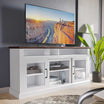
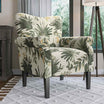
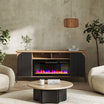


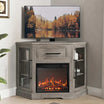

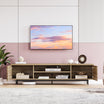
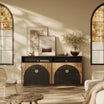

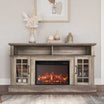
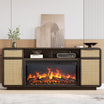

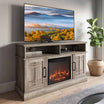

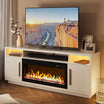

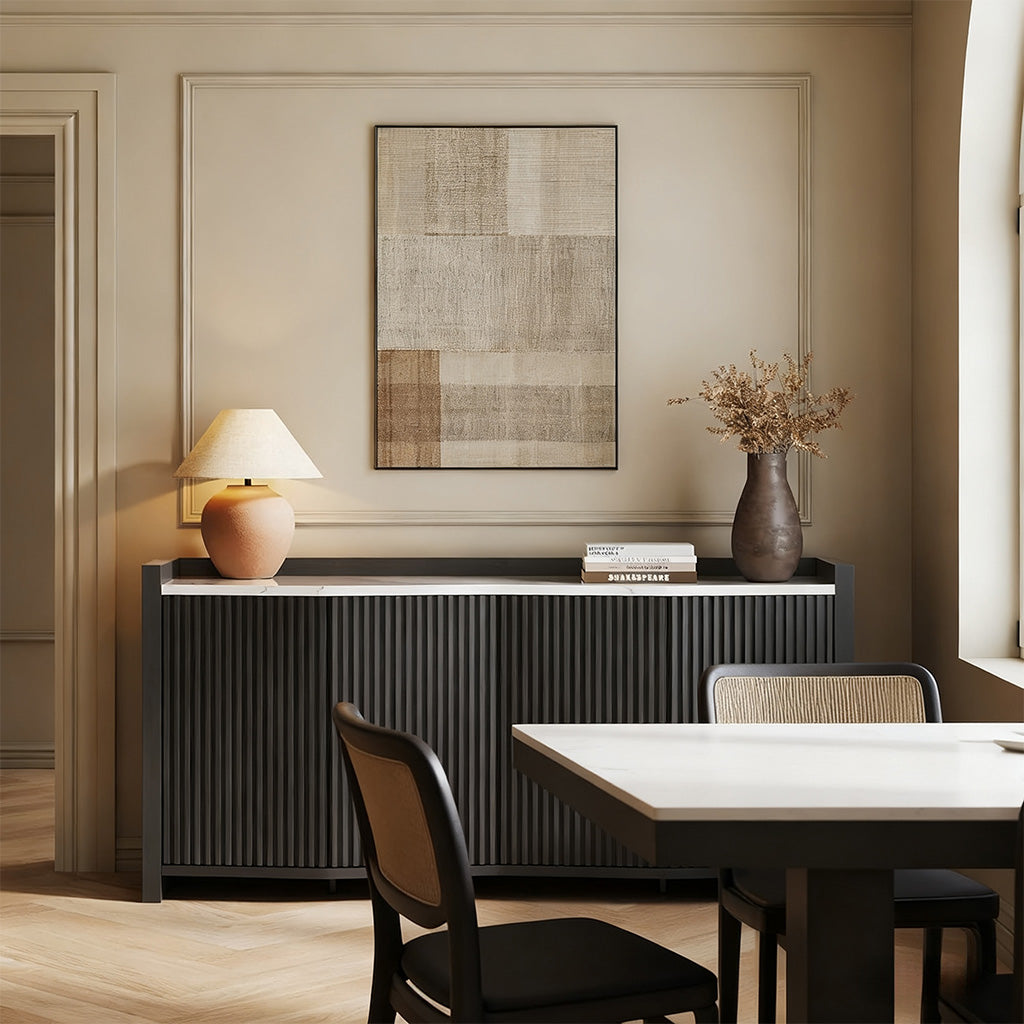
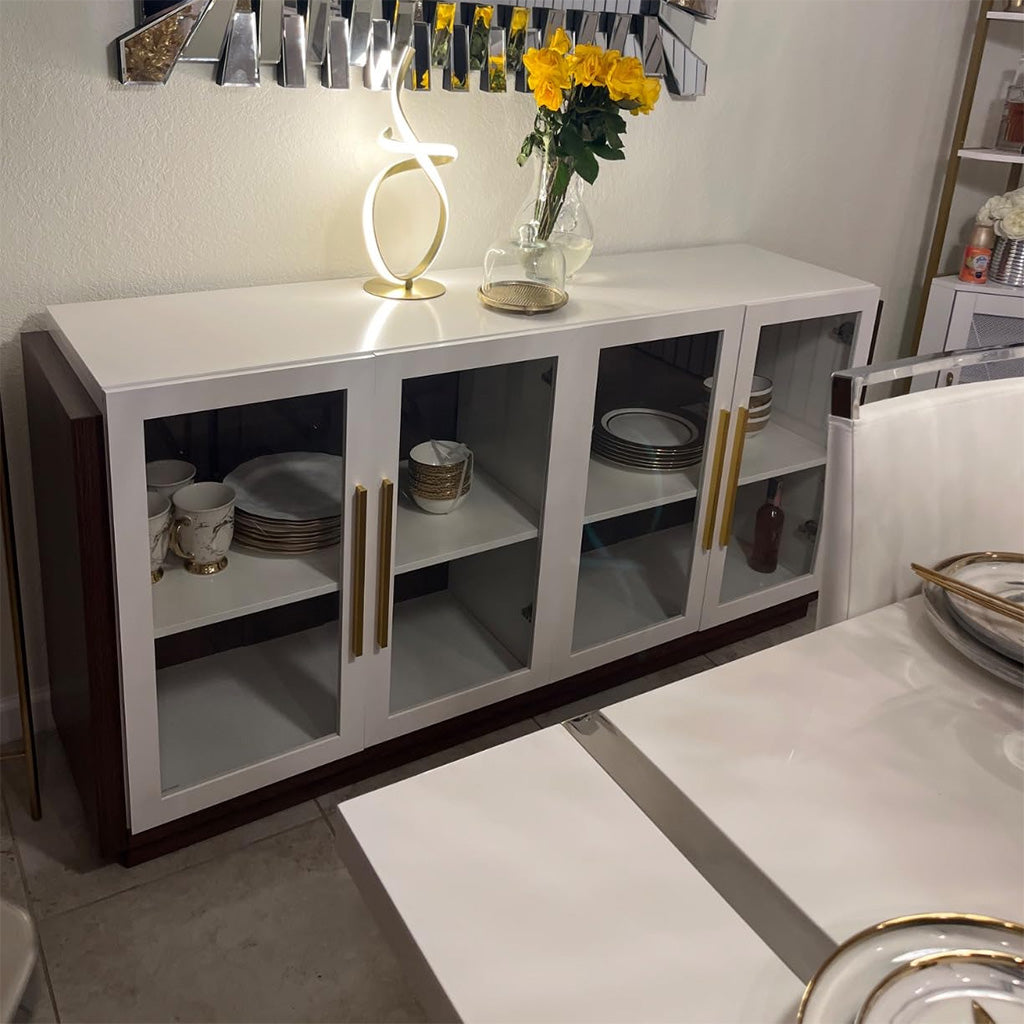
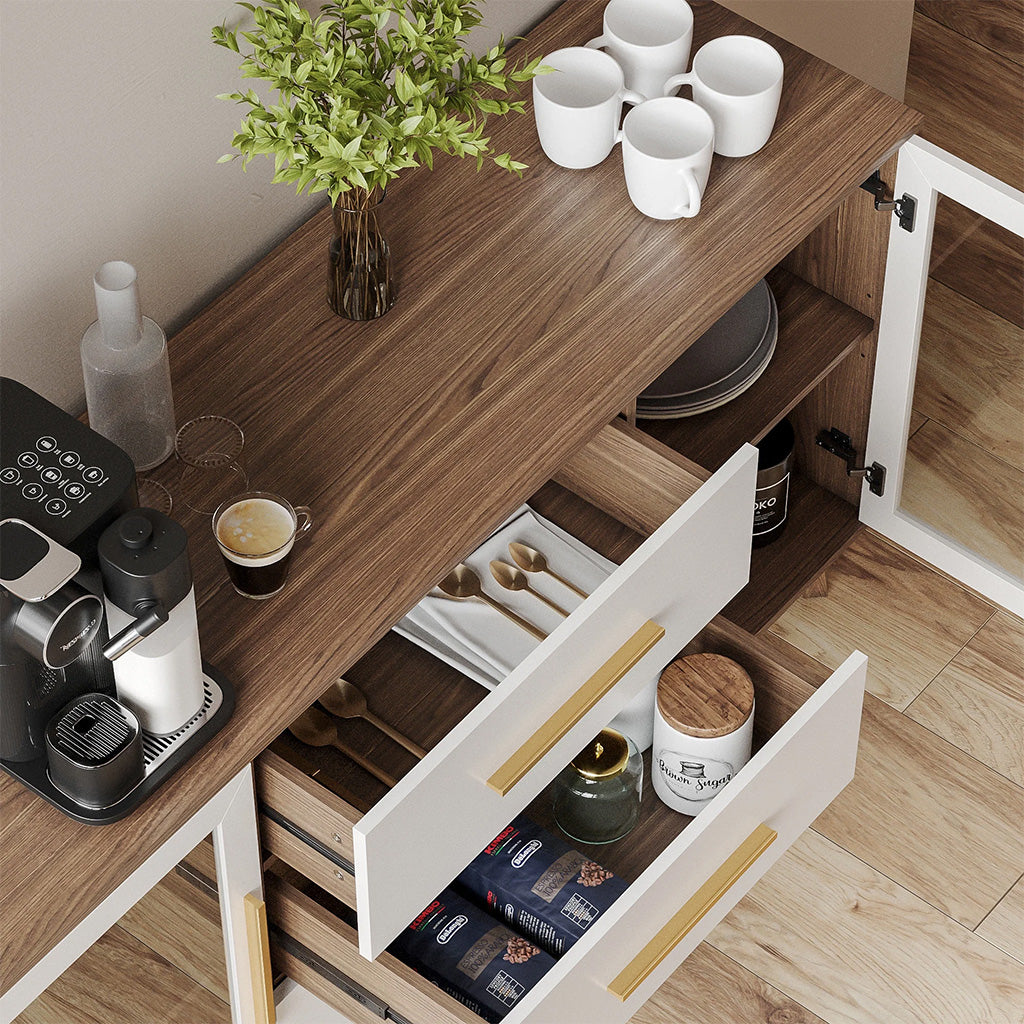
Leave a comment
This site is protected by hCaptcha and the hCaptcha Privacy Policy and Terms of Service apply.